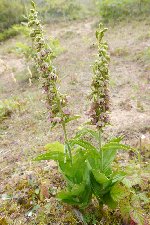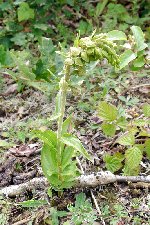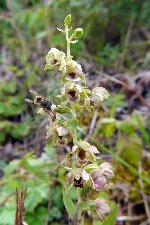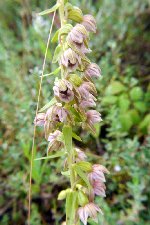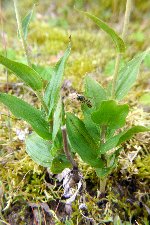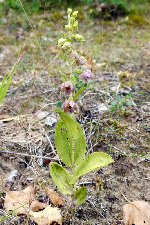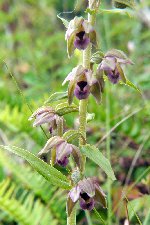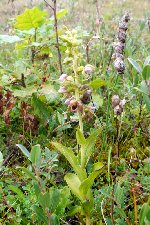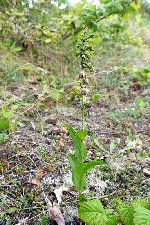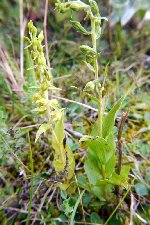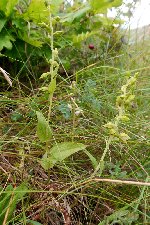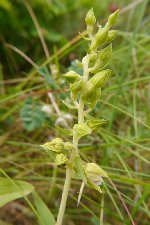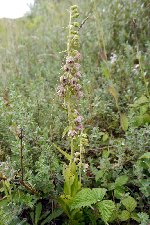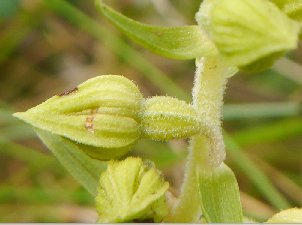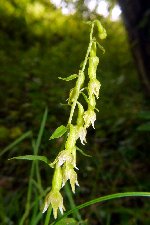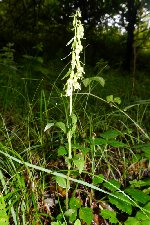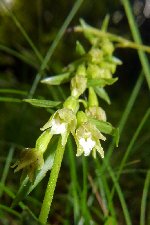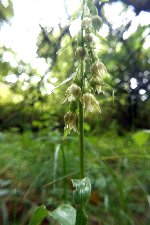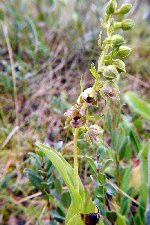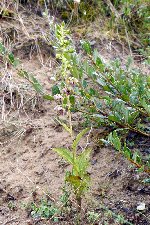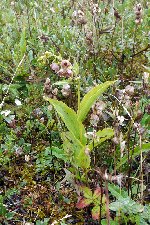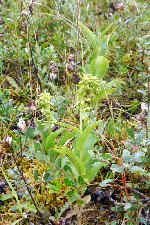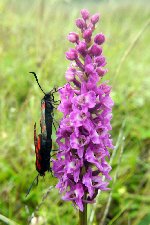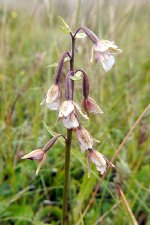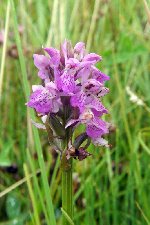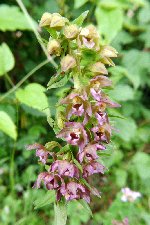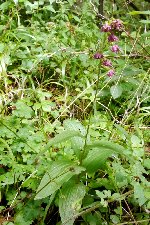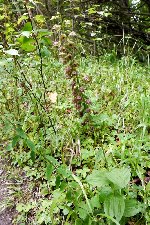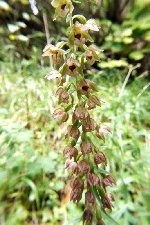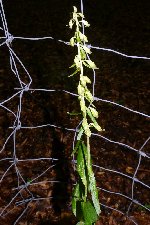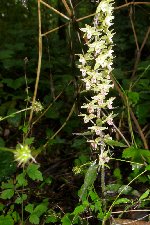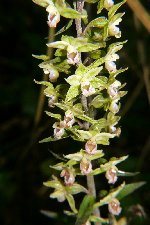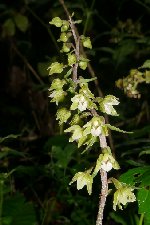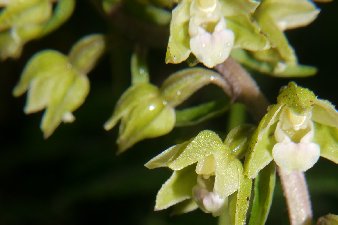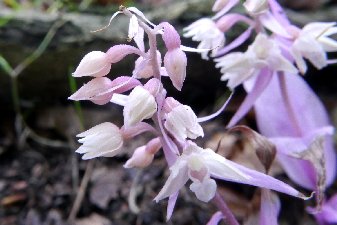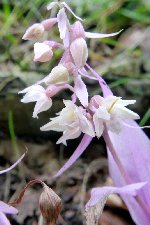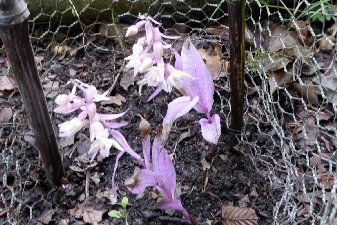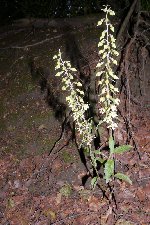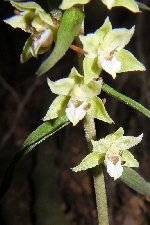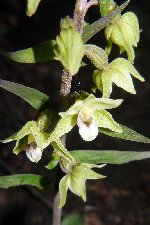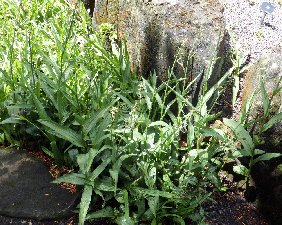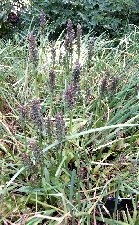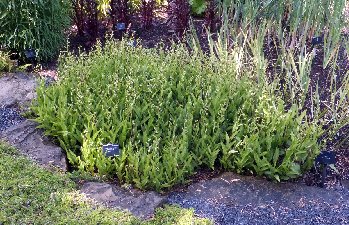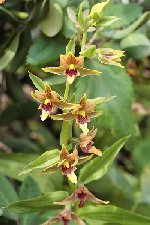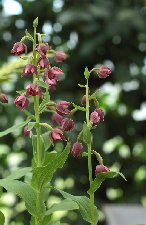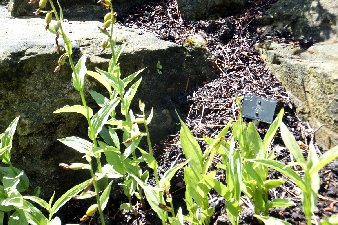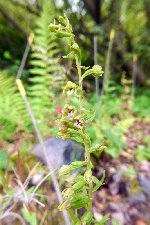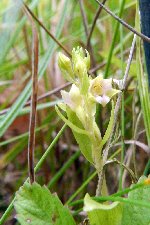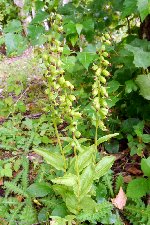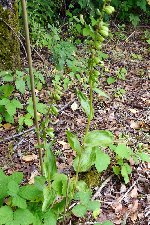|
|
|||||||||||||||||
|
|
|||||||||||||||||
 |
|
Oxwich Dunes, 22nd July 2017 (SS5121987607) I was last here, looking at orchids, way back in 1983 and noted Southern Marsh and Early Marsh Orchids. It was more a case of noting what I saw rather than a good search. So this is more like virgin territory.
Nearby, over a dune top were some smaller Helleborines not quite flowering, and at first glance I wondered if these were the E. phyllanthes cambrensis. However the leaves were more Broad-leaved, and the down on the stem backs this up. However this down extends onto the ovaries and even to the back of the sepals. The ovary pedicle appears untwisted and there is only a tinge of pigment at its base. Some have a more overall yellowish colour, and compared to the more green look sickly.
Elsewhere here in the dunes and slacks were Pyramidal Orchids and Marsh Helleborines in their final flings, with Southern Marsh and Early Marsh Orchids with seed pods developing. No orchids were found in the damper areas where the alder trees border the reed beds neighbouring the road. Would it be worth continuing towards Nicholaston Woods on a future visit? Kenfig Burrows, 23rd July 2017 These dunes are more extensive than Oxwich, and are more well known haunts of the neerlandicas and cambrensis. Luckily I have some good directions for both; the are on the opposite side of the pool to where we saw Fen Orchids a couple of years ago. It is a rainy day, but that does seem to be the norm here. The neerlandicas are found roughly where I was directed but a slight error meant some backtracking. Again they look and grow in the same situations as at Oxwich. These seem smaller than those at Oxwich, but I believe we haven't come to the most productive area for these plants. Elsewhere there are still some Southern Marsh Orchids in flower, and possibly hybrids with Early Marsh Orchids that are currently developing seed heads. There are patches where the Southern Marsh would have put on fantastic displays. The same can be said for Marsh Helleborines too, largely gone over. There is one patch though, where many hundreds of browned and seedless flower spikes suggested that hot weather or lack of water had seen off this year's flowering. Some Marsh Fragrant Orchids can also be seen in the dune slacks, but despite a long round trip we fail to find the one slack where we found Fen Orchids in 2015
NOTES: Both the two welsh specialities in the dune systems mentioned above are disputed taxons. I have had correspondence that supports the suggestion that neerlandica is merely an eco-type. Oxwich also supports Broad-leaved Helleborines and I saw some evidence that there could be a spectrum of forms of E. helleborine from typical BLH through to neerlandica. Apparently there was some tree felling at Kenfig a few years ago, and the typical BLHs growing by them came up again in subsequent years as Neerlandica types. The conclusion drawn was that removal of cover and exposure to wind triggers a change in the plants resulting in shorter, more compact flower spikes, and leaves closer to the ground. Both these help to protect the plant. I would add my own thoughts to this. A Visit to The Chilterns It seemed at the planning stage that a late summer trip to the Chilterns would be a great way to catch plenty of Epipactis. There are numerous sites mentioned in Harrap and some have been much lauded on the internet. I was expecting to see something orchidy around every corner. But of the five sites chosen for a visit, three (BasildonPark, Pulpit Hill, and Ashridge Estate) yielded nothing. The other two yielded not a lot at all. The Chilterns were a big disappointment after having a number of considerable great orchid days out in N. Wales and N. W. England. The sojourn was just about saved from disaster by two additional sites added to the itinerary. Warburg Estate, 24th July 2017 I had the highest hopes for a visit to this site. There is a visitor centre and it is open, but unmanned. Luckily someone has put out a map and added coloured dots for orchid locations. While this may take away the thrill of the hunt, there are so few that this map is probably essential, at least for a first-timer. We find Broad-leaved Helleborines along the rifle range, including one which show how the flower colour develops as they open; deep at the bottom and pale at the top. There are more along the hilly track at the end of the range. The Narrow-lipped Helleborines grow under beech without any other competition. All but one are caged for protection from deer. The map informed us that one was in flower four days previously (just one!) and that is now well and truly finished with seed setting.
This has been added after a tip-off. Along the path from the parking spot towards the panoramic view there are about 15 Violet Helleborines. All are close to the parking. Some stand out; almost ghostly in the poor light, while others are found partly hidden by the brambles and other plants. They seem to prefer the path margins as none can be found deeper into the woodland. Another addition to the tour, and I have specific directions to the star plant of these few days. It is a small two-stemmed Violet Helleborine var rosea on a roadside verge. It is protected from being eaten by a wire cage, and from feet and vehicles by a collection of sticks and branches around it. It is quite a startling sight, almost like alien vegetation being so pink and white. Despite that the protection it has prevents it being seen in passing along the road. Some regular plants have been reported nearby in previous years, but they are sporadic. To be honest, I do not know whether to count the sites either side of the M40 as different sites. Just because they are managed as one does not mean they can be viewed as a whole. Previous visits here in early summer have not been too exciting I have to say. Today on the south side there is nothing to report new in the meadows, and the Cowsleaze Woods draw a blank. With a bit of time available we head for the woodlands on northern side and I screech to a halt after spotting three Violet Helleborines growing by the roadside. How these have escaped being run over when two cars meet at this point I will never know. One spike has a number of fruit flies visiting the flowers. There are three more just within the woods, but no more Epipactis can be found on a wide sweep both sides of the road.
Okay, it's a bit of a cheat to count anything seen growing here, but not much different to someone ticking off S. lingua and O. laxiflora at Wakehurst. Discounting the blousey tropicals in the glass houses we see four hardy orchid species in or near the rockery garden. They all grow in huge clumps indicating how well they are tended, but all have finished flowering. Two, Southern Marsh Orchid and Marsh Helleborine, are natives and two Epipactis species are aliens. E. gigantea (called on one label False Lady's Slipper) is a N. American species, and can be found in two spots, while E. royleana is Asian. Both of these seemed to have seed pods ripening, despite the presumed due lack of suitable pollinators in west London; so perhaps chance that they will become part of the UK flora from wind-blown seed.
Knowle, Warwickshire, 28th July 2017 I felt I had to visit this little reserve, not just because Knowle is where I was born and brought up, but also because it is (currently) the most southerly site for Dune Helleborines. It is said to have been used for land fill with soil and hardcore from the Merseyside area. This is a possible seed source, but the exact origin is a bit of a mystery. Around Knowle there are a number of old marl pits; this may have been one once. Like Alyn Waters the Epipactis here were originally thought to have been all Broad-leaved Helleborines, when in fact both this species and the E. dunensis grow together; which opens up several possibilities for hybrids, The orchid area is roped off, some plants are caged for protection.
We are really too late to appreciate this site this year as can be seen from the photos. Most plants have long since finished flowering, but one can see that the Dunes are in the open ground and the Broad-leaved are at the back and in the shade. They are marked with coloured canes. With blue marking new plants this year I would guess yellow marks original plants with red or red yellow indicating new for the years in-between. A walk around most of the reserve yielded no other orchids apart from an old Common Spotted Orchid near the others. POSTSCRIPT early August. An expert is proposing that the Knowle Helleborines are E. muelleri. This species is quite similar to dunensis, but this seems unlikely. However an internet search seems to provide images of flowers almost identical, to others quite different. Various articles are no real help either.
|
|||
|
|
|||
|
|
||||||||||||||
